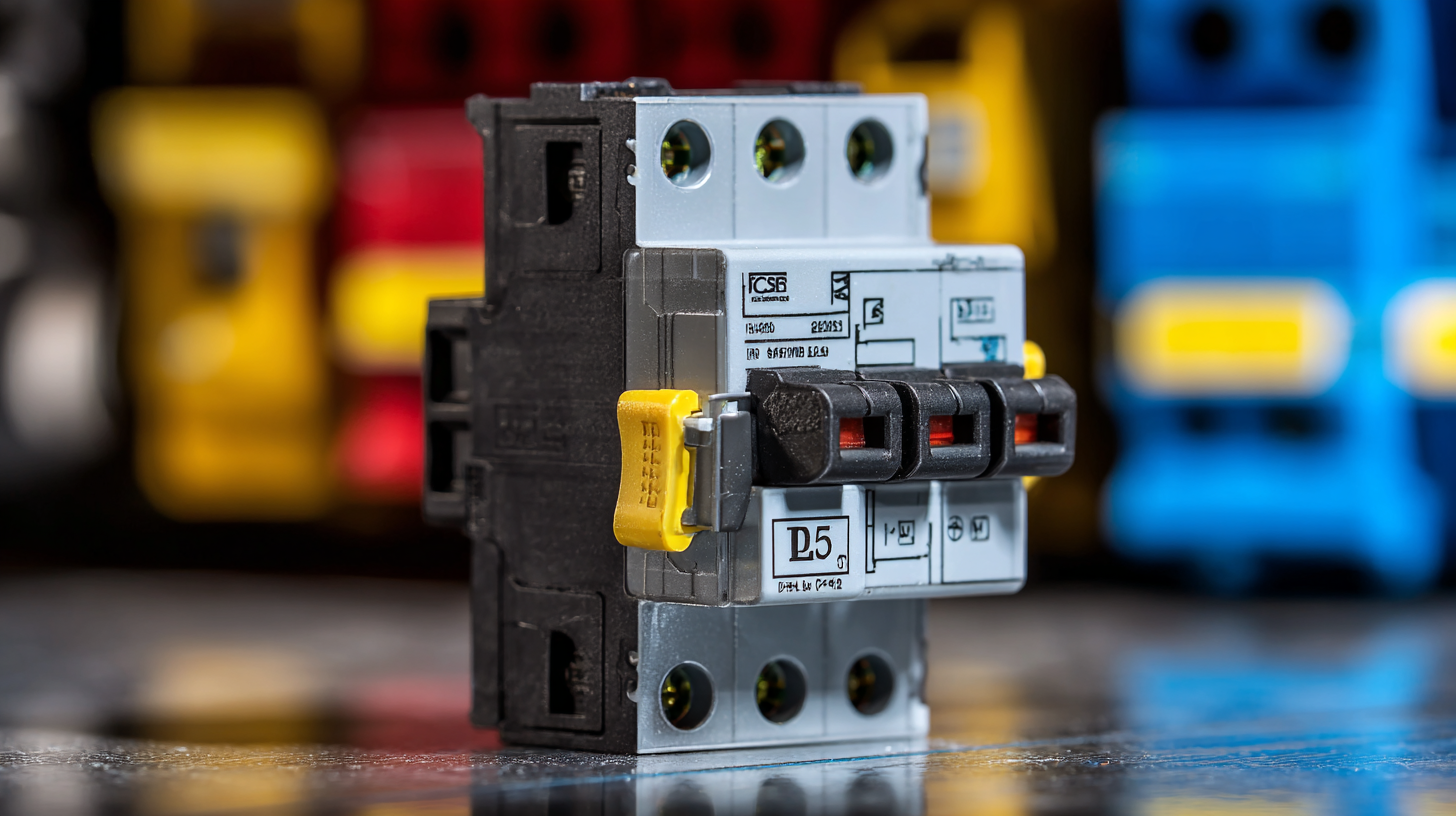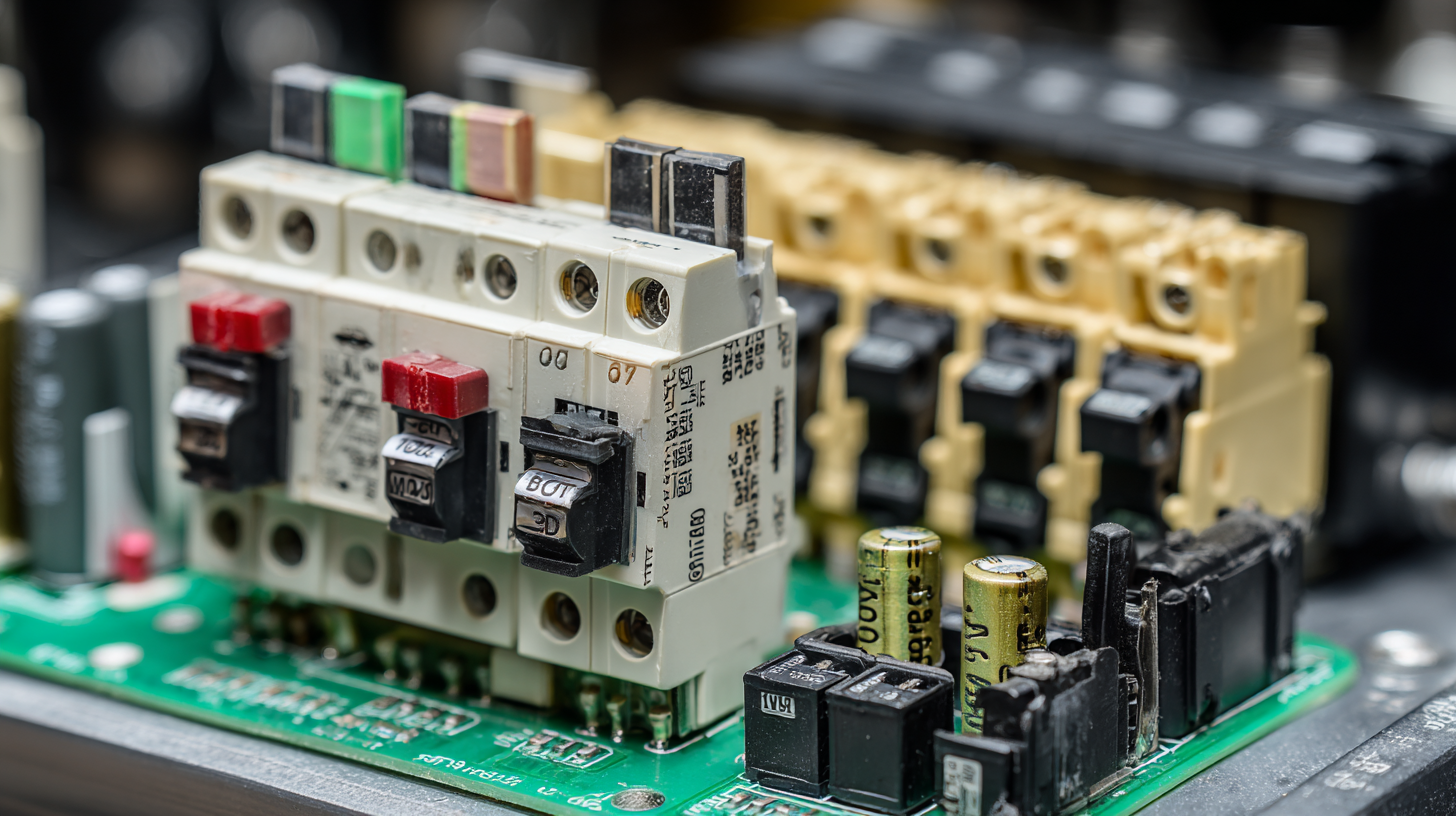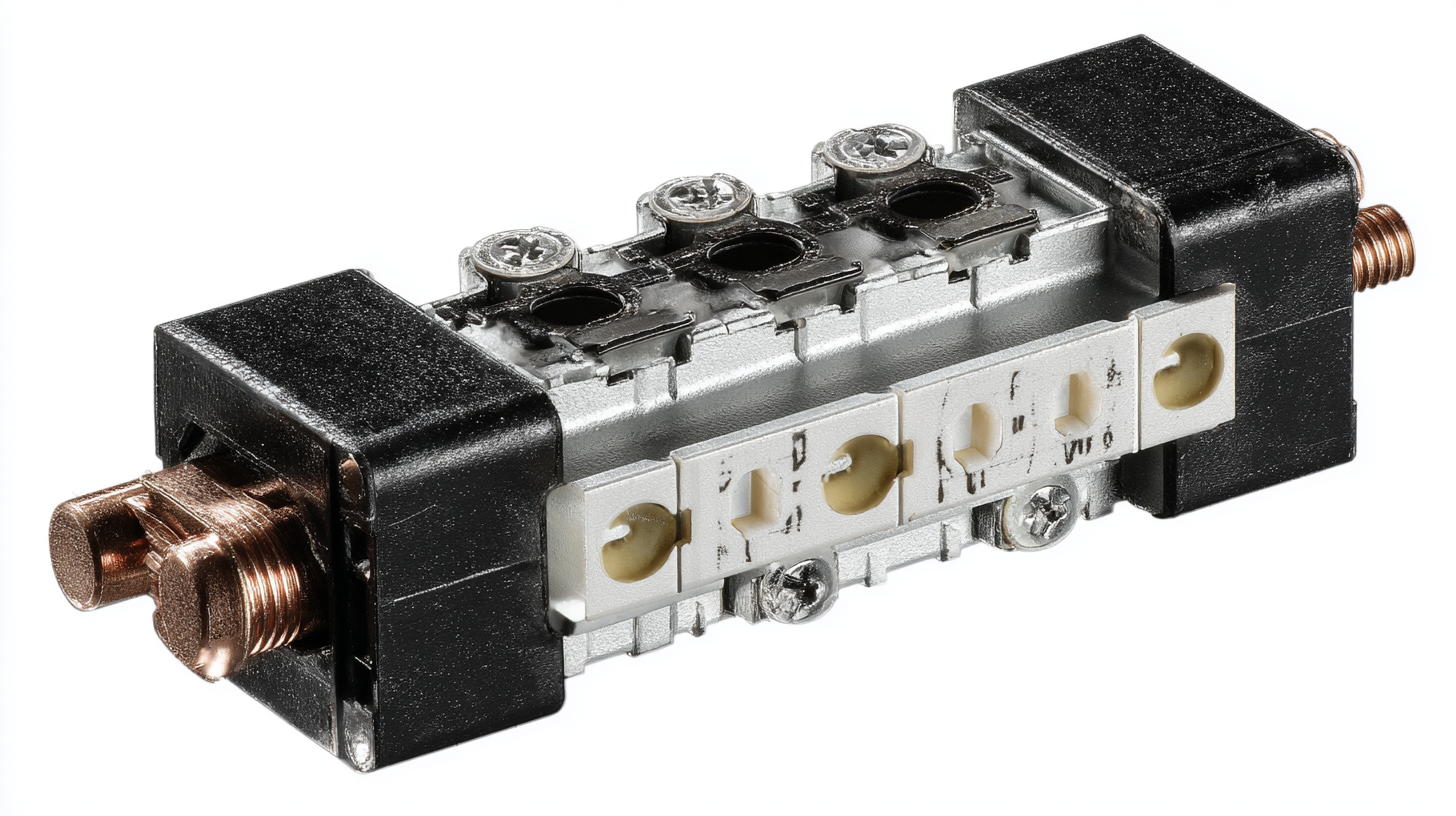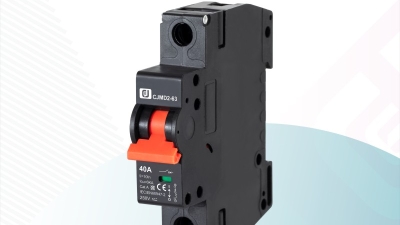How to Choose the Right DC Miniature Circuit Breaker for Your Electrical Needs
Table of Contents
- Factors to Consider When Choosing a DC Miniature Circuit Breaker
- Understanding the Different Types of DC Miniature Circuit Breakers
- Key Specifications to Look for in DC Circuit Breakers
- Common Applications for DC Miniature Circuit Breakers
- How to Ensure Compatibility with Your Electrical System
- Tips for Proper Installation and Maintenance of DC Circuit Breakers
- Essential Guide to Choosing the Right 1-63A 1000VDC 6kA PV MCB Miniature Circuit Breaker for Solar Energy Systems
- FAQS
- Conclusion
- Related Posts
 Hey there! These days, with the electrical world moving so quickly, picking the right DC Miniature Circuit Breaker (or MCB) is more important than ever. I came across a report from MarketsandMarkets that projections are pretty wild—expecting the global market for these tiny breakers to hit around $4.21 billion by 2025. Most of that growth is coming from renewable energy projects and energy storage systems, which is pretty exciting. At Zhejiang Cejia Electric Co., Ltd., we've been in the game for over 20 years, constantly pushing to create smart energy storage power solutions that fit all kinds of electrical needs. We’re all about quality and keeping our prices competitive, so we’re confident that our expertise with DC MCBs makes us a dependable partner when it comes to keeping electrical systems safe and efficient. It’s really important for users to understand the specs and different uses of these breakers—they help you make smarter choices that match your particular situation. In the end, it’s all about building a safer and greener energy future!
Hey there! These days, with the electrical world moving so quickly, picking the right DC Miniature Circuit Breaker (or MCB) is more important than ever. I came across a report from MarketsandMarkets that projections are pretty wild—expecting the global market for these tiny breakers to hit around $4.21 billion by 2025. Most of that growth is coming from renewable energy projects and energy storage systems, which is pretty exciting. At Zhejiang Cejia Electric Co., Ltd., we've been in the game for over 20 years, constantly pushing to create smart energy storage power solutions that fit all kinds of electrical needs. We’re all about quality and keeping our prices competitive, so we’re confident that our expertise with DC MCBs makes us a dependable partner when it comes to keeping electrical systems safe and efficient. It’s really important for users to understand the specs and different uses of these breakers—they help you make smarter choices that match your particular situation. In the end, it’s all about building a safer and greener energy future!
Factors to Consider When Choosing a DC Miniature Circuit Breaker
So, if you're trying to pick out a DC miniature circuit breaker (or MCB for short), there are a few key things you gotta keep in mind to make sure it works well and keeps things safe. First off, you really want to get a handle on the specs of the circuit you're protecting. Things like the current and voltage ratings are pretty obvious, but also think about what kind of loads you're dealing with—whether they’re resistive, inductive, or capacitive. These details actually matter because they help you pick an MCB that won’t trip unnecessarily and will keep everything running smoothly.
Another important point is the breaking capacity—that’s basically how much fault current the breaker can handle and stop without breaking itself. You want to find an MCB with a capacity that’s higher than whatever fault current might occur in your setup—better safe than sorry, right? It’s also worth checking if it has thermal and magnetic tripping features—they give extra protection against overloads and short circuits.
And don’t forget about where you’re gonna install this thing. Environmental factors like humidity, extreme temperatures, dust, or even chemicals can seriously impact how durable and reliable your MCB will be over time. So, consider the environment, and choose accordingly. All in all, picking the right MCB is about matching it to your specific needs—things like load type, potential fault currents, and where it’s going to be working day in and day out.
Choosing the Right DC Miniature Circuit Breaker: Data Overview
Understanding the Different Types of DC Miniature Circuit Breakers
So, when you're picking out the right DC miniature circuit breaker (or MCB) for your electrical setup, it's really important to get a good grip on the different types out there. Basically, DC MCBs are designed to keep your circuits safe by stopping overloads and short circuits, which means they help prevent mishaps and keep things running smoothly. And with everyone moving toward renewable energy and more energy-efficient systems, the market for low voltage DC circuit breakers is actually booming — it’s expected to grow quite a bit in the coming years.
Lately, we’ve seen a real spike in the demand for miniature circuit breakers, and experts say this trend isn’t slowing down anytime soon — projections suggest they’ll be worth a ton by 2034. Plus, as smart grids and new tech become more common, these breakers are getting smarter and more capable, making them even more appealing. It’s kind of interesting — modern circuit breakers are now often compared to electronic fuses, showing just how much the way we protect our electrical systems has evolved.
When you're deciding which one to go for, don’t forget to check things like how much current it can handle, how fast it responds, and how you’ll mount it — all these little details really make a difference in how well it protects your setup.
Key Specifications to Look for in DC Circuit Breakers
So, when you're choosing a DC miniature circuit breaker (or MCB for short) for your setup, it’s pretty important to get a good grip on the main specs that affect how well it works and how reliable it is. One of the key points you should look at is the breaking capacity—that's basically how much fault current the breaker can handle and shut off without messing up. According to a recent industry report, if you're dealing with residential systems or solar setups, going for an MCB with at least a 6 kA breaking capacity is a smart move. It ensures your protection against short circuits is solid.
Oh, and don’t forget about the rated current. That’s the maximum load your breaker can handle safely without hiccups. The International Electrotechnical Commission even points out that picking a breaker whose rated current matches your actual load can really boost system stability and help prevent trips that happen just because of minor overloads. Plus, the operating voltage rating is something to keep in mind too—it should meet or be higher than your system’s needs, especially if you’re working with DC systems, where 250V or more is often recommended for solar energy setups. Paying attention to these details makes sure your circuit breaker works well, keeps everything safe, and does what it's supposed to do without any surprises.
Common Applications for DC Miniature Circuit Breakers
When you're picking out a DC miniature circuit breaker (or MCB for short), it’s pretty important to understand the typical ways they’re used. For sure, these DC MCBs play a key role in things like solar power systems, electric vehicles, and battery storage setups. Honestly, industry reports suggest that the global solar market is expected to hit around $223 billion by 2026 — which means more demand for reliable protection devices like DC MCBs. Their ability to cut off fault currents and control loads keeps your electrical systems safe and running smoothly.
**Tip 1:** Always look for an MCB with a high breaking capacity—something around 6kA or more is usually enough for most solar setups. That way, it can handle any potential surge currents without breaking a sweat.
Apart from solar energy, DC MCBs are also super important in electric vehicles. As more people jump on the EV bandwagon, safety gear in charging stations and onboard systems is becoming a big deal. Experts say the EV market could be worth over $800 billion by 2027, so having solid circuit protection is a no-brainer.
**Tip 2:** Make sure you pick an MCB rated for the specific voltage and current your setup needs. For example, a type B MCB works well for most homes, while type C is better suited if you’re dealing with industrial stuff.
How to Ensure Compatibility with Your Electrical System
When you're trying to pick out the right DC miniature circuit breaker (or MCB) for your electrical setup, making sure it plays nice with what you already have is super important. Sometimes, it’s just a matter of taking a step back and really looking at what your system needs—things like load current, voltage levels, and where it’s actually going to be used. These days, with electric vehicles becoming more common and renewable energy sources ramping up, there’s been a big jump in demand for reliable protective devices like MCBs, especially in high-voltage scenarios.
Plus, as electrical systems get more and more complicated—think automotive tech or smart home systems—it's even more critical to choose a breaker that plays well with electromagnetic compatibility (or EMC). Basically, if the device can avoid causing interference with other electronics, it’s a win. Manufacturers need to make sure their MCBs pass all the right EMC tests so everything works smoothly without messing each other up. And with renewable energy tech evolving quickly, adding energy storage units into the mix means we need circuit breakers that not only protect but also boost overall system reliability and efficiency. Keeping up with these trends and sticking to the latest standards is a must if you want your electrical setup to run like a well-oiled machine.

Tips for Proper Installation and Maintenance of DC Circuit Breakers
When you're dealing with installing DC miniature circuit breakers (MCBs), making sure you get the job done right is super important—not just for safety, but also to keep everything running smoothly. First off, take a bit of time to pick the right breaker for your setup. Think about things like the voltage and current ratings, and how your electrical system behaves overall. It's a good idea to follow the manufacturer’s instructions closely, honestly—skipping steps can cause all sorts of headaches later on. Also, don’t forget to use the proper wiring and connectors that can handle the load; overheating is a real risk if you go cheap or mismatched.

Once everything’s installed, regular check-ups are key. Honestly, just a quick glance now and then to look for signs of wear, heat marks, or any misalignment can save you big troubles down the line. It’s also smart to test the trip mechanism at least once a year—that way, you’re confident it’ll trip correctly if there's ever a fault. Oh, and keeping the area around the breakers tidy and dust-free? That small habit can prevent overheating and other hazards. So yeah, if you stick to these simple maintenance tips, your DC circuit breakers will last longer, and your whole electrical setup will be a lot more reliable.
Essential Guide to Choosing the Right 1-63A 1000VDC 6kA PV MCB Miniature Circuit Breaker for Solar Energy Systems
When it comes to selecting the right Miniature Circuit Breaker (MCB) for solar energy systems, understanding the specifications and applications of products like the CJMD2-63 series DC circuit breaker is crucial. Designed for direct current systems, this breaker can handle a rated voltage of up to 1000V and a rated current of 63A, making it an ideal choice for various renewable energy applications. According to the International Renewable Energy Agency (IRENA), the global solar power capacity has consistently risen, necessitating reliable components to ensure efficient energy management in solar systems.
The CJMD2-63 series is characterized by its compact design and robust structure, facilitating installation in diverse environments, from residential smart homes to industrial energy storage systems. Its ability to incorporate auxiliary contacts and alarm systems enhances its functionality in smart city and transportation applications. Reports indicate that microgrids, which play a pivotal role in modern energy distribution, stand to benefit from the reliability and adaptability of such advanced circuit breakers. As urban areas evolve into intelligent municipalities, integrating MCBs like the CJMD2-63 becomes essential for optimizing energy usage and maintaining safety standards in DC power distribution networks.
With the continuous growth in solar installations, investing in quality components like the CJMD2-63 series breaks down barriers for efficient power distribution, ensuring both safety and reliability. The need for dependable circuit protection solutions is underscored by the increasing incidence of electrical faults in solar energy systems, which can hinder overall performance and safety. Choosing the right MCB not only safeguards the equipment but also enhances the longevity and efficacy of solar energy systems as a whole.
FAQS
: Key factors include the current rating, voltage rating, types of loads (resistive, inductive, capacitive), breaking capacity, thermal and magnetic tripping mechanisms, and the environmental conditions where the MCB will be installed.
Breaking capacity refers to the maximum fault current the MCB can interrupt without damage. It's crucial to select an MCB with a breaking capacity that exceeds the potential fault current in your application to ensure safety and reliable operation.
It’s essential to consider the types of loads your circuit will handle: resistive, inductive, or capacitive, as these will impact the performance and selection of the appropriate MCB.
Environmental factors such as humidity, temperature, and exposure to dust or chemicals can affect the durability and reliability of the MCB, making it essential to consider these elements during selection.
As electrical systems become more complex, maintaining EMC is crucial to prevent interference that could disrupt the functionality of the system. Selecting MCBs that meet EMC testing standards helps ensure product reliability.
With the integration of renewable energy and storage technology, there is a greater demand for circuit breakers that protect and enhance system reliability and efficiency, necessitating up-to-date knowledge of industry trends.
Thermal and magnetic tripping mechanisms provide added protection against overloads and short circuits, ensuring the MCB can quickly disconnect from an overcurrent situation to minimize damage.
The specific application environment—including factors like dust, moisture, and chemical exposure—can significantly affect the performance and longevity of the MCB, influencing the choice of suitable models.
Assessing existing configurations ensures that the selected MCB is compatible with the system’s requirements, including load current and voltage, which is vital for optimal performance.
The rapid advancement in electric vehicle technology has increased the demand for effective protective solutions like MCBs, especially in high-voltage applications necessary for these systems.
Conclusion
When you're choosing a DC Miniature Circuit Breaker, it's pretty important to keep a few key things in mind—stuff that lines up with your specific electrical setup. For starters, you'll want to get familiar with the different types out there, what their specs are, and what kinds of applications they're usually used for. Oh, and don't forget to make sure that the breaker you pick is compatible with your existing electrical system. Knowing a bit about how to install and maintain it can really help it last longer and work better overall.
Now, Zhejiang Cejia Electric Co., Ltd. has been in the game for over 20 years, bringing a ton of experience to the table. They offer high-quality DC Miniature Circuit Breakers, especially designed for energy storage power supplies. They’re all about meeting international standards and making sure their customers get dependable products and good service—plus, at prices that won’t break the bank. It’s a solid choice if you’ve got a bunch of different electrical needs to cover.
Related Posts
-

Exploring Global Trade Opportunities for Mcb Rccb at the 137th Canton Fair 2025
-

Navigating Trade Barriers: The Resilience of China's Best DC Breaker Industry Amidst U.S.-China Tariffs
-

Understanding the Distinct Features and Applications of Best MCB RCCB Alternatives for Global Buyers
-

Ultimate Guide to Choosing the Best Afdd Rcbo for Your Electrical Needs
-

The Ultimate Guide to Choosing the Best Circuit Breaker Enclosures for Your Global Projects
-

Exploring the Advantages of Choosing the Best MCB and MCCB for Global Suppliers


